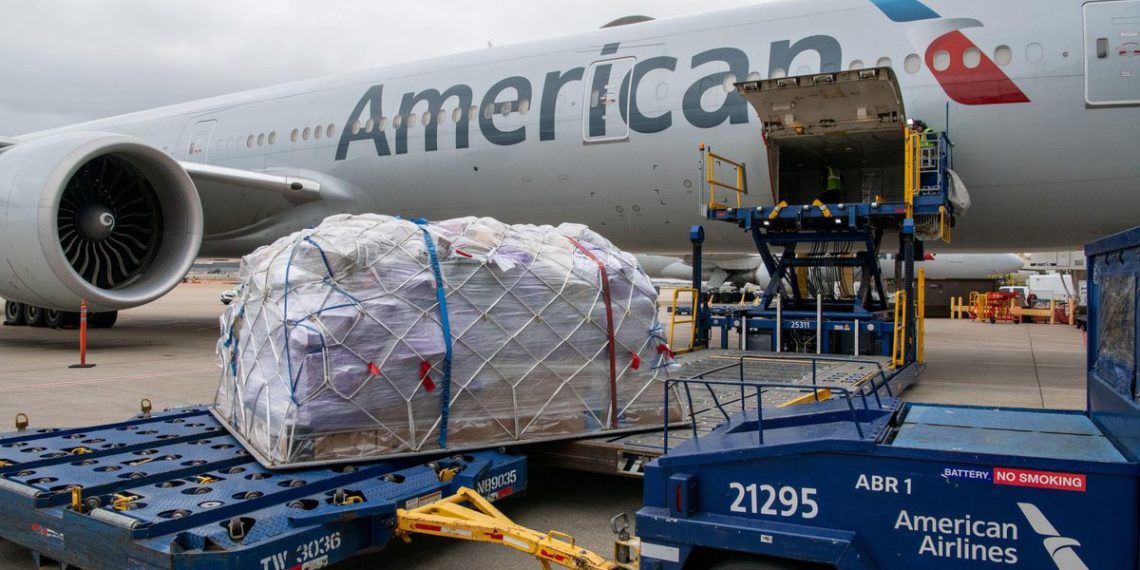Global air cargo demand has increased by 9% in February 2021, compared to pre-COVID-levels, February 2019. According to IATA, February demand also showed strong month-on-month growth over January 2021 levels. IATA indicates that volumes have now returned to 2018 levels seen prior to the US-China trade war.
However, the reports indicate that recovery of global capacity stalled owing to the recent spike in COVID-19 cases. Capacity shrank 14.9% compared to February 2019 due to new capacity cuts on passenger side as government tightened travel restrictions.
Accounting for the global air cargo market’s performance, the report indicates that operating conditions remain supportive for air cargo. IATA reports that conditions in the manufacturing sector are robust despite the recent spike in COVID-19 outbreaks. The global manufacturing Purchasing Managers’ Index (PMI) was at 53.9 in February. IATA explains that PMI results above 50% indicates growth for manufacturing sector, compared to the previous month.
Moreover, IATA indicates that the level of inventories remains relatively low compared to sales volume. The report also added that supply chain disruptions and the resulting delivery delays have led to long supplier delivery times. This is second longest in the history of the manufacturing PMI, IATA notes. Thus, manufacturers use air transport, which is quicker to recover time lost during the production process.
“Air cargo demand is not just recovering from the COVID-19 crisis, it is growing. With demand at 9% above pre-crisis levels (Feb 2019), one of the main challenges for air cargo is finding sufficient capacity.”
Willie Walsh, IATA’s Director General
The Director therefore underscored the need for clarity on government plans for a safe industry restart.
Regional Performance in the Air Cargo Market
Asia-Pacific airlines saw demand for international air cargo rise 10.5% in February 2021 compared to the same month in 2019. As the main global manufacturing hub, the region has benefited from the pickup in economic activity. According to IATA, demand in the majority of the region’s key international trade lanes has returned to pre-COVID-19 levels. International capacity remained constrained in the region, down 23.6% versus February 2019. Also, the region’s airlines reported the highest international load factor at 77.4%.
Moreover, IATA reports that African airlines’ cargo demand increased a massive 44.2% over the same period- the highest of all regions. IATA explains that robust expansion on the Asia-Africa trade lanes contributed to the strong growth. To add, the report notes that February international capacity grew by 9.8% compared to February 2019.
North American carriers showed a 17.4% increase in international demand in February compared to February 2019. Economic activity in the US continues to recover, supported by the rising demand for e-commerce amid lockdown restrictions. International capacity grew by 4.4% in February compared to 2019.
European carriers posted a 4.7% increase in demand in February compared to same month in 2019. Cargo demand was largely unaffected by the new lockdowns in Europe and the operating conditions remain supportive for air cargo. International capacity decreased by 12.5% in February,
Middle Eastern carriers posted an 8.8% rise in international cargo volumes in February versus February 2019. February capacity was down 14.9% compared to the same month in 2019. However, Latin American carriers reported a decline of 20.5% in international cargo volumes in February compared to the 2019 period; this was a deterioration from January when demand was down the 17.5% on 2019 levels. International capacity also decreased by 43.0% compared to February 2019.
Read also: Ghanaians are willing to pay taxes- Afrobarometer report






















